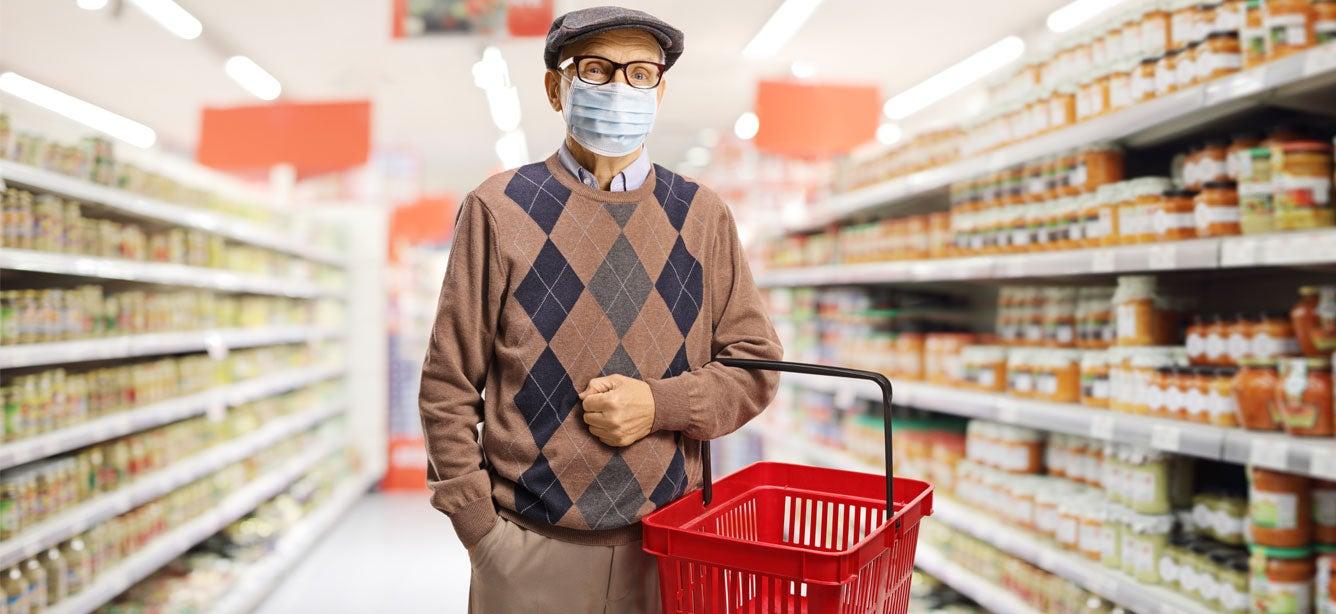
Related Topics
One of the five core benefits NCOA identifies as critical to enhancing economic security for lower-income older adults is the Supplemental Nutrition Assistance Program (SNAP). SNAP provides assistance to help people afford groceries.
In 2023, for households with a person over 60, the median benefit was $188 per month.1 SNAP is an important contributor to overall financial security for households, by freeing up money budgeted for food to be spent on other necessities. In addition, there is evidence that SNAP improves household food security and therefore nutritional status and health outcomes for seniors. In Fiscal Year (FY) 2020, 88% of all eligible individuals were enrolled in SNAP.2 However, just 42% of eligible elderly individuals were enrolled in the program, including just 25% of elderly individuals living with other people. However, this is a significant improvement from the 35% of eligible elderly individuals who were enrolled in FY 2007.
Using data from the USDA Food and Nutrition Services, NCOA created the visualization tool below of state SNAP participation rates from 2010 to 2015. The most important conclusions from this data are:
- Eligible seniors in larger, more rural states were less likely to be enrolled in SNAP. The states with the highest proportion of eligible seniors enrolled in SNAP in 2012 are those in the northeast and New England and Pacific Northwest. These states tend to have well-developed and well-funded benefits enrollment mechanisms (e.g. simplified online applications) and populations that are generally easier to reach and more amenable to applying for government assistance. On the other hand, the states with the lowest proportion of seniors enrolled tend to be larger and more rural.
- California had the lowest elderly participation rate. Only 19% of eligible people over 60 in California were enrolled in SNAP. This is a serious problem, because California has the fourth highest number of total eligibles after New York, Texas, and Florida. It is most likely due to the very high proportion of low-income older people in the state who have a non-English language preference. To the state’s credit, however, it should be noted that California’s elderly participation rate has improved by over 210% since FY 2010.
- Massachusetts’ participation rate improved immensely. In FY 2002, Massachusetts had the second lowest senior participation rate in the country at 16%. In FY 2015, it had the third highest at 67%. In that time, Massachusetts waived interviews for elderly beneficiaries, implemented a standard medical expense deduction of $90 (recently increased to $155), simplified and shortened its application to two pages, created a statewide call center, extended the certification period to 12 months and modified reporting requirements to require beneficiaries to notify the state agency only when there was a change in income that would alter benefits. However, between 2014 and 2015, Massachusetts had a 10% drop in total SNAP enrollment in part due to problems with a new online computer system,3 demonstrating that even the highest-performing states can suffer setbacks when trying to modernize systems.
- Participation improved in nearly every state in both the short- and medium-term. From FY 2010 to FY 2015, almost every state and the District of Columbia—with the exception of Kentucky, North Dakota, and West Virginia—increased their senior SNAP participation rate.
Explore the visualization tool.
Sources
1. USDA. Characteristics of Supplemental Nutrition Assistance Program Households: Fiscal Year 2023. April 2025. Found on the internet at https://fns-prod.azureedge.us/sites/default/files/resource-files/snap-FY23-Characteristics-Report.pdf
2. Trends in Supplemental Nutrition Assistance Program Participation Rates: Fiscal Year 2020 and Fiscal Year 2022. October 2024. Found on the internet at https://fns-prod.azureedge.us/sites/default/files/resource-files/ops-snap-trendsfy20-fy22-report.pdf
3. Megan Woolhouse. 'Horrible' food stamp program leaves thousands cut off. Boston Globe. May 20, 2015. Found on the internet at https://www.bostonglobe.com/business/2015/05/20/official-calls-food-stamp-system-embarrassment
